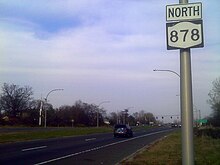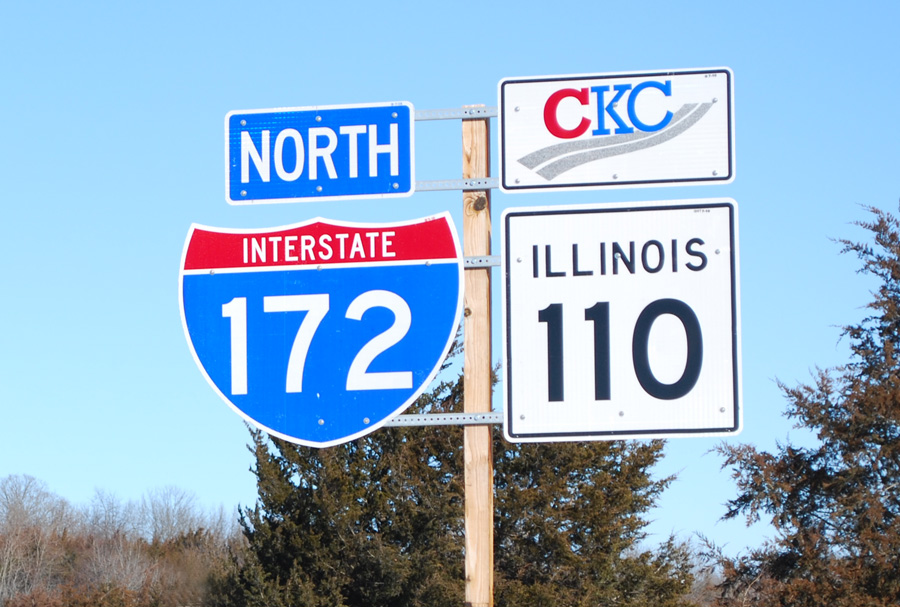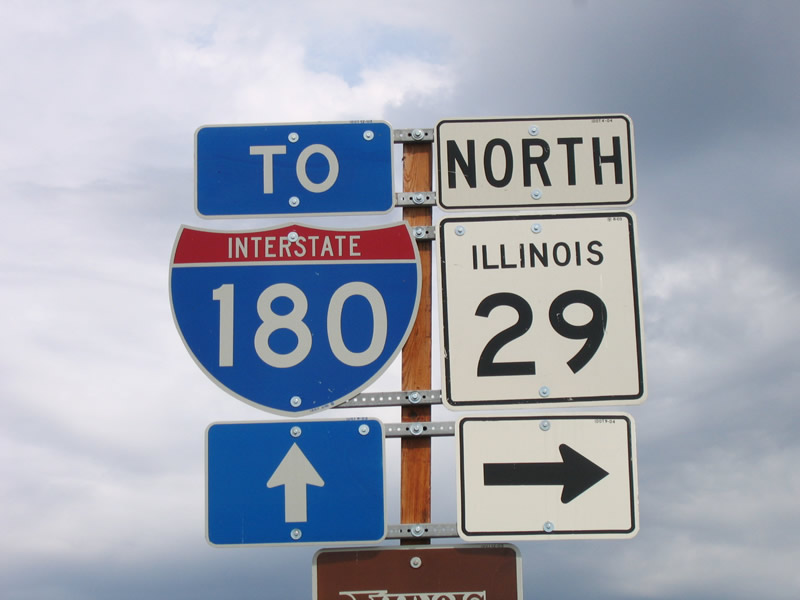The 10 Most Pointless 3-digit Interstate Highways
The Interstate Highway System is a marvel of engineering, even in spite of its cost, both economic and social. There are over 46,000 interstate miles in the US. Surely, not all of them are necessary. Some can even be considered pointless.
Other than being the highest numbered interstate highway, nothing notable exists about the route. In its original plan, it was to have connected with Lockport, NY along a 12 mile route, which would have increased traffic and would have certainly removed it from this list, however, opposition during the 1970's to freeways would result in a scaled back proposal to NY-263, which was constructed and finished in the early 1990's. The only real purpose this route has when compared to NY-263 is to avoid traffic from the University at Buffalo.
And somehow it's exponentially more deserving of being an interstate than the final member of this list.
 |
| A 1958 map of what was completed of the original interstate highway act, which has since been added upon in a significant way. Image: WTTW |
What makes a highway pointless, especially one built to the highest road standards in the world? It can be length, as many of these routes are only a mile or two in length, but it doesn't have to be. There are quite useful interstate highways that nonetheless very short (I-190 in Illinois and I-238 in California are good examples). Another qualification is the area they serve; many of these routes either don't connect to a significantly populated area, or don't facilitate downtown traffic. And while some of them most certainly do fulfill these criteria; they could do so without being labeled as an Interstate Highway.
So with that in mind, here's my list of the Interstate Highways I find the most useless. Let me know if you agree or disagree in the comments. At the end of the day, these findings are nothing more or less than my own opinion based on what I've observed across the system.
10) Interstate 990 (New York)
I-990 in upstate New York runs for about six miles in length, making in the third longest road on this list. It connects I-290 and the State University of New York at Buffalo, and then continues on for another five miles, until ending at NY-263.
 |
| "The first northbound shield for I-990 was this assembly preceding milepost 1." Image: Jeff Morrison via Interstate-Guide.com |
9) Interstate 878 (New York)
I-878, the Nassau Expressway, was planned to be much longer than the 7/10 of a mile that it currently is. I talked before about it when I discussed unbuilt expressways in New York City. Its present state is a New York State Route that only has eastbound lanes. It is saved from being further down this list in that it (somewhat) allows traffic to bypass JFK airport traffic.
 |
| Image: Adam Moss |
Why exactly only the stretch from I-678 to the JFK Expy is considered part of the interstate highway system is beyond me.
8 and 7) Interstates 175 & 375 (Florida)
I decided to combine these two spurs from Interstate 275 into one entry because they seem to serve the exact same purpose, and both do so in a way that essentially makes them glorified entrance ramps. The eastbound lanes only have exit ramps, and the westbound lanes only have entrance ramps.
 |
| Google Maps |
I-175 connects downtown St Petersburg with I-275, about a mile in length. I-375 does the same thing about 3/4 of a mile north. Like a couple other routes on this list, these highways are the result of funding loopholes. According to Kurumi.com, "Both were conceived as state routes originally. However, when a funding issue led the state to cancel part of I-75 in Hillsborough County, five miles of eligible interstate were released. This opportunity led to the designation of I-175 and I-375."
In 2021, St. Petersburg shared a downtown revitalization plan that would remove both 175 and 375, with the 375 removal being of a higher priority, and turning them back into streets for more than just cars. Interestingly, the other I-375 in Detroit, MI is also being removed to restore access to the historically black neighborhoods it was built over to serve the Downtown area. While I did not include Michigan's 375 on this list, it is certainly among many 3-digit routes across the nation that could be considered to have a negative, rather than a positive, effect on its city.
6) Interstate 172 (Illinois)
My home state is home to two of the interstates on this list, the first being I-172, which connects I-72 with Quincy, IL, nineteen miles north, making it the longest road on this list. Quincy is a city of roughly 40,000 people, and it is by far the largest municipality for about 50 miles in any direction. On top of that, 172 meets Quincy about 4 miles from the downtown area. The road continues as IL-110/336 north to Macomb and beyond, not that a northerly 172 extension would make it any less pointless of a route.
 |
| I-172/IL-110 signs. Image: Great River Economic Development Foundation. |
In reality, it's all politics. 172 (and 110/336) are part of an area of Illinois called "Forgottonia". Citizens of the 16 county region between the Mississippi River, the Quad Cities, and Central Illinois felt that they were missing out on infrastructure and transportation spending in the 1950's, as a Chicago-Kansas City interstate connection died in Congress three times. US Senator Dick Durbin recoined the term in an attempt to win over votes from the region, which he did successfully.
 | |
|
According to the Associated Press, "Durbin noted that western Illinois has been called 'Forgotonia,' for lack of services including good roads, and the new designation shows the area has not been forgotten." Never mind that the area continues to lose population despite the brand new I-172 and IL-336 expressways.
5) Interstate 189 (Vermont)
Interstate 189 is a victim of the freeway revolts, with only about half of the planned route completed as of 2022 (the northern half has been canceled, but could be revived as a non-Interstate parkway). It was supposed to connect downtown Burlington, VT with I-89, but only runs to US-7, with part of the road built west of the interchange, but not open for vehicle traffic.
 |
| Interstate 189. West of US-7, the road continues north, but not open for traffic. Image: Google Maps |
Had the road been completed to downtown Burlington, it probably wouldn't be on this list, but as it stands, it's a very long entrance/exit ramp from US 7 to I-89 and vice versa.
I-289 was also planned for Vermont, however it too suffered much the same fate as public opinion went against freeways. VT-289 currently runs along part of the original proposed beltway, as a parkway around Essex, VT, but notably doesn't connect with I-89.
4) Interstate 381 (Virginia)
One of a small number of Interstate highways with no exits whatsoever, I-381 connects its parent with downtown Bristol, VA. It continues south of its end as a surface street, Commonwealth Ave, or VA-381.
 |
| Map of I-381 via Interstate-Guide.com |
Signed in 1960, I believe this was given Interstate status simply to advertise the new Interstate Highway System, or to give the Bristol area the distinction of having its very own Interstate connection. There is nearly no purpose to this being a signed route, or anything more than a continuation of VA-381.
3) Interstate 180 (Illinois)
I-180 runs 13 miles from I-80 in Central Illinois to Hennepin, IL. A town of 700 people. And that's about it.
 |
| Image: AARoads via Interstate-Guide.com |
So how did a town so small get its very own connection to the Interstate Highway Network? It was built to serve a nearby steel plant, which closed down shortly after it was completed. Even after the plant's reopening in 2002, I-180 still only serves about 3600 cars per day on its best days. The US Government's Government Accountability Office noted that 180 was built to entice Jones & Laughlin, a steel company, "looking to locate a plant in Hennepin. By objective criteria, more important routes in Tacoma and Tucson were turned down at the same time I-180 was approved." (Kurumi)
In spite of its uselessness, 180 has been proposed to be extended down to Peoria, which would somewhat legitimize its existence, but no concrete plans have been in place since the 1960's. In fact, a cost-saving measure in 2015 would've removed two of its lanes, having it join I-93 as the only interstates with only two lanes of traffic.
In a bit of irony, it's not the most useless I-180, as you'll see in the #1 spot.
2.) Interstate 587 (New York)
I-587 is cosigned with NY-28 for its entire one mile length, its parent doesn't acknowledge its existence (signs for the exit are for NY-28), and it interchanges with said parent via a roundabout. (Map of the route)
 | |
|
It doesn't have any other interchanges in between its endpoints, and its designation stops short of downtown Kingston. Known as Col. Chandler Dr, there's no reason why it simply couldn't, or shouldn't, simply be NY-28. This barely qualifies as an expressway, let alone one that would be interstate standard.
And somehow it's exponentially more deserving of being an interstate than the final member of this list.
1) Interstate 180 (Wyoming)
Interstate 180 in Wyoming is fascinating in one sense, given that it is one of the few interstates with traffic signals (and the only one with more than one to my knowledge). It is a signed at-grade road connecting I-80 at a diamond interchange with downtown Cheyenne, WY. (Map of the route)
While there are interstate highways in Alaska and Puerto Rico that are not to Interstate standards, this is the only one in the Lower 48, as well as the only signed route, in which no part of the route conforms to Interstate standards. A pair of bridges over a Union Pacific yard is the only grade separation throughout the route. It also has a maximum speed of just 40 mph.
 |
| Image: Dale Sanderson via Interstate-Guide.com |
It is co-signed with BL-25, US-85 and Business US-87 for its entire length. So how does an arterial roadway in Cheyenne get an Interstate designation? I-80's route through the Cheyenne area was finalized in the 1960's, with Wyoming pressing for a freeway connection into downtown, as the route chosen bypassed Cheyenne to the south.
The FHWA originally denied Wyoming's request, which prompted the state to resubmit it as an at-grade expressway. This reduced the cost of the route from $16 million to just under $9 million.
I can respect that over $8 million were saved by proper government oversight of transportation projects; but yet that same standard could have been applied to many of the other routes on this list. 180 is an important artery in the Cheyenne area, as there's only two other bridges over the Union Pacific yard. That being said, it's just an artery, and could just as easily be US-85/US-87B/BL-25.
There are a few other Interstate highways which aren't exactly necessary, but nonetheless didn't make this list. Honorable mentions in the useless category would be New York's I-790, which would've made this list if it weren't planned to be extended into Utica, and I-585 in South Carolina, which at one point in its life didn't connect with any other interstate, outside of BL-85.
I hope you enjoyed today's blog, thanks as always for reading!



Interesting article. I love articles like this. I did see one error. As a big geography geek and also one who believes terminology matters, "contiguous" should have been used to refer to the 48 states on the North American continent that are between Canada and Mexico. Alaska is considered to be part of the continental USA because it is also on the North American continent, although it doesn't touch any other state in North America.
ReplyDeleteAny short interstate (roughly under 10 miles) which coexists with another numbered highway like the WY I-180 and NY I-587 mentioned should just be eliminated.
ReplyDeleteInterstate 238 California.
ReplyDeleteI-395 in Baltimore, Maryland is another glorified exit ramp that fell victim to the interstate revolt, also.
ReplyDeleteHuzzah for freeway revolts! Burlington VT is one place that saved itself from the bulldozers because they stood up for themselves. Now if only Shreveport could stop itself from destroying a Black neighborhood to build I-49...
ReplyDeletelol
Delete